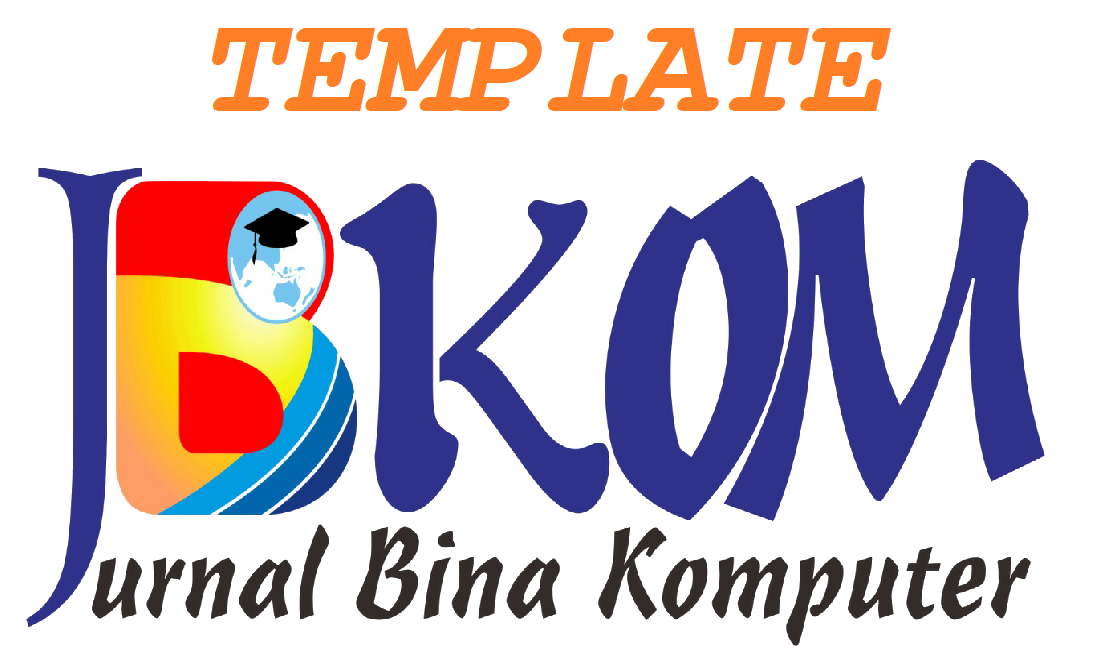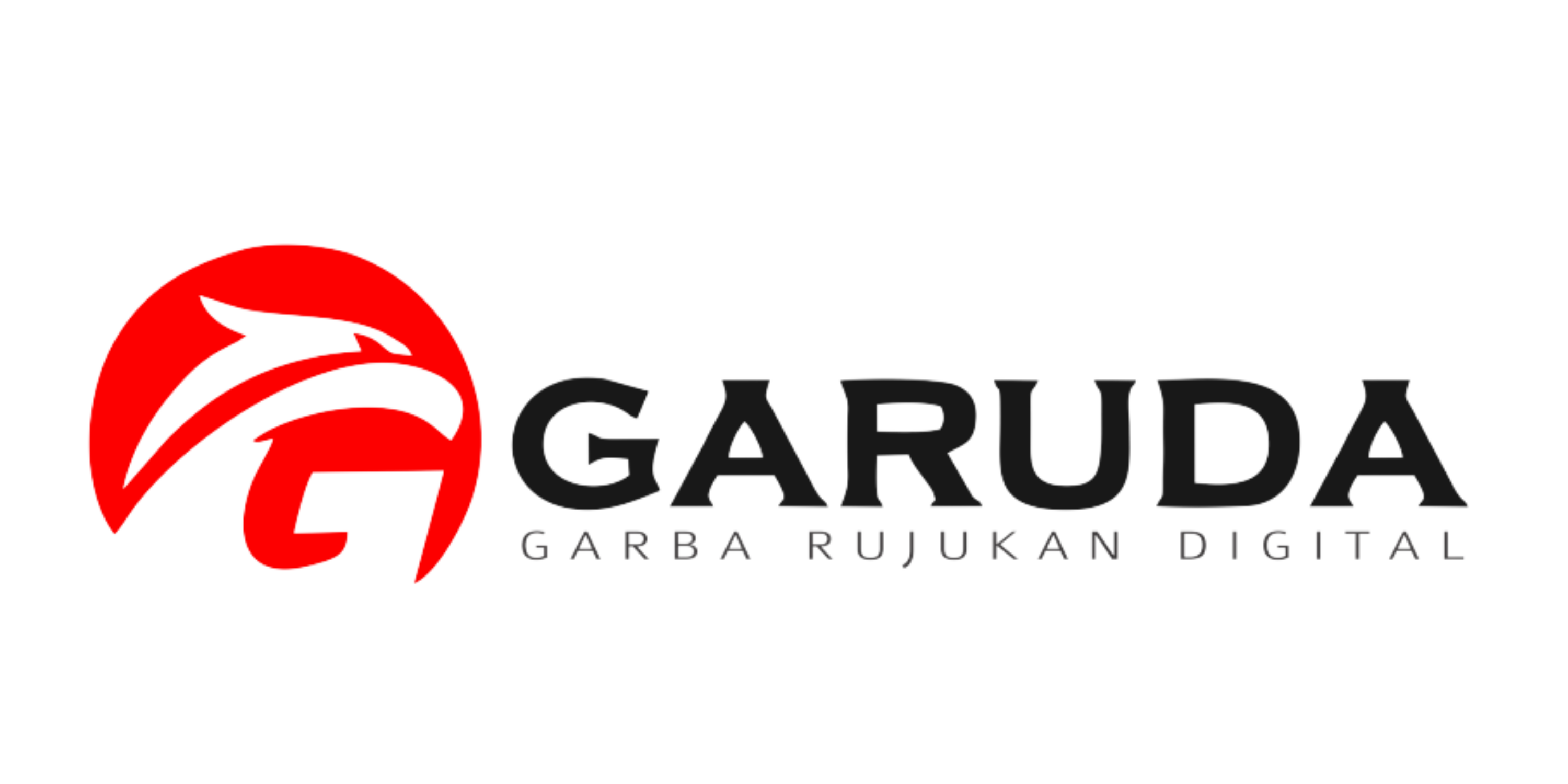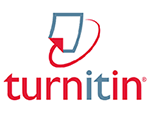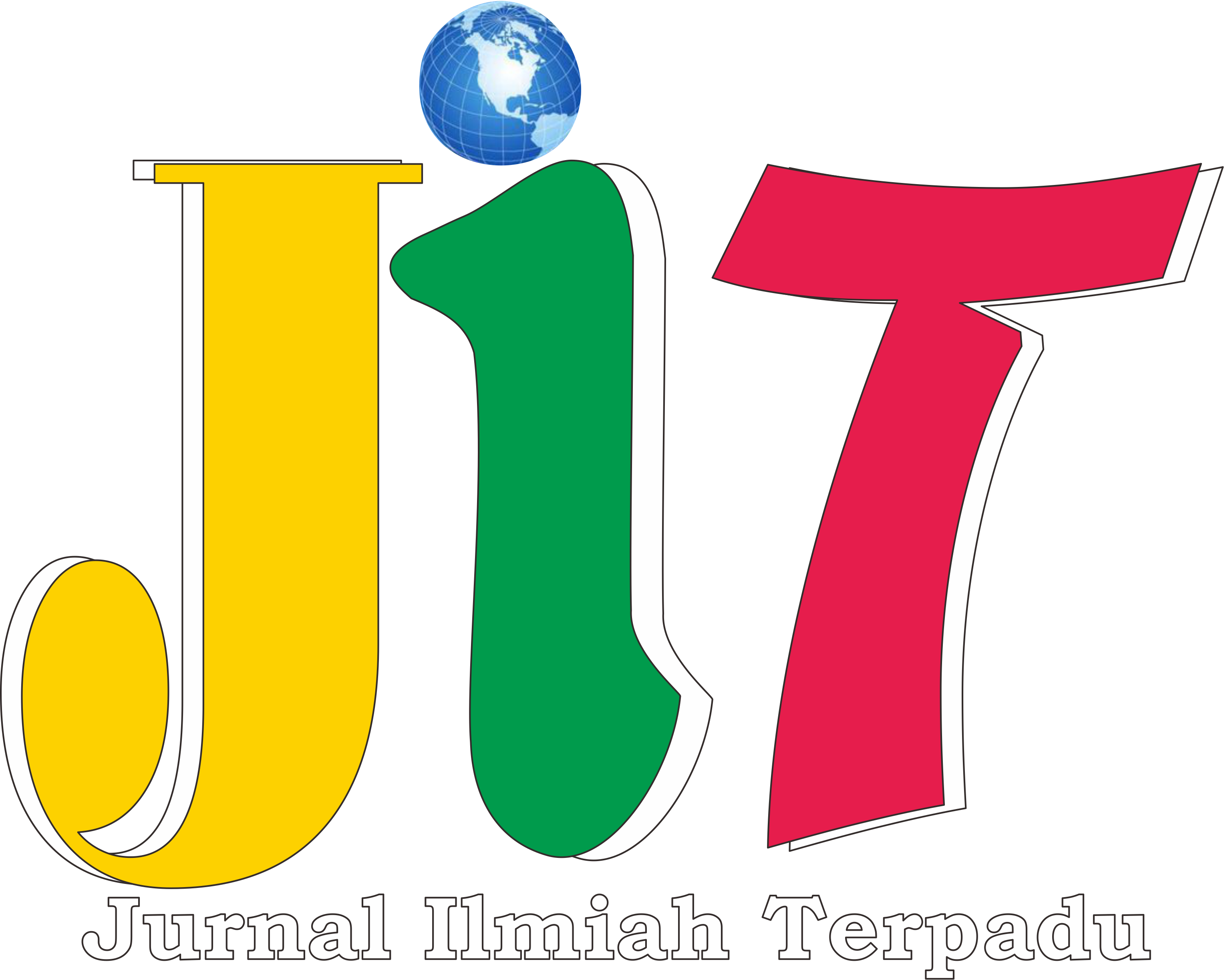Submissions
Author Guidelines
All papers submitted to the journal should not have been published or submitted for publication elsewhere. The official language of the manuscript to be published in JBKOM is Bahasa Indonesia.
General Author Guidelines
All manuscripts must be submitted to JBKOM Editorial Office using Online Submission at E-Journal portal address:
Login | Jurnal Bina Komputer (binadarma.ac.id) , where author register as Author by online. If authors have any problems on the online submission, please contact Editorial Office at the following email: bina_komputer@binadarma.ac.id
Manuscript Template
Manuscript should be prepared according to the following author guidelines in the MS Word article template: Template JBKom.docx - Google Dokumen
Reviewing of manuscripts
Every submitted paper is independently reviewed by at least two peer-reviewers. The decision for publication, amendment, or rejection is based upon their reports/recommendation and made by Editor. If two or more reviewers consider a manuscript unsuitable for publication in this journal, a statement explaining the basis for the decision will be sent to the authors within three months of the submission date.|
Revision of manuscripts
Manuscripts sent back to the authors for revision should be returned to the editor without delay. Revised manuscripts can be sent to editorial office through the Online Submission Interface About the Journal | Jurnal Bina Komputer (binadarma.ac.id). The revised manuscripts returned later than three months will be considered as new submissions.
Editorial Office of JBKOM
All correspondences should be sent to the following Editorial Office:
Alek Wijaya, S.Kom., MIT.
Universitas Bina Darma
Phone 085758504840
bina_komputer@binadarma.ac.id
Gedung Prof. Bochari Rachman 1
Universitas Bina Darma
JL. Jenderal Ahmad Yani No.15, Kelurahan 9/10 Ulu, Kecamatan Seberang Ulu I
Kota Palembang, Provinsi Sumatera Selatan 30264
Guideline for Online Submission
The author should fulfill the form as detail as possible where the star marked form must be entered. After all form textbox was filled, Author clicks on “Register” button to proceed the registration. Therefore, Author is brought to online author submission interface where Author should click on “New Submission”. In the Start a New Submission section, click on “’Click Here’: to go to step one of the five-step submission process”. The following are five steps in online submission process:
- Step 1 - Starting the Submission: Select the appropriate section of the journal, i.e. Original Research Articles, Review Article, or Short Communication. Thus, the author must check-mark on the submission checklists. An author should type or copy-paste Covering Letter in Letter to Editor.
- Step 2 – Uploading the Submission: To upload a manuscript to this journal, click Browse on the Upload submission file item and choose the manuscript document file (.doc/.docx) to be submitted, then click "Upload" button until the file has been uploaded. Do not upload cover letter and other supplementary files here.
- Step 3 – Entering Submission’s Metadata: In this step, detail authors metadata should be entered including marked corresponding author. After that, manuscript title and abstract must be uploaded by copying the text and paste in the textbox including keywords.
- Step 4 – Uploading Supplementary Files: Supplementary file should be uploaded including Covering/Submission Letter, and Signed Copyright Transfer Agreement Form. Therefore, click on Browse button, choose the files, and then click on Upload button.
- Step 5 – Confirming the Submission: Author should final check the uploaded manuscript documents in this step. To submit the manuscript to JBKOM, click Finish Submission button after the documents are true. The corresponding author or the principal contact will receive an acknowledgment by email and will be able to view the submission’s progress through the editorial process by logging in to the journal web address site.
After this submission, Authors who submit the manuscript will get a confirmation email about the submission. Therefore, Authors are able to track their submission status at any time by logging in to the online submission interface. The submission tracking includes a status of manuscript review and editorial process.
User Rights
All articles published Open Access will be immediately and permanently free for everyone to read and download.
Manuscript Preparation Guidelines
General Organization of Paper
The paper will be published in JBKOM after a peer-reviewed process and decided as "Accepted" by the Editor. The final paper layout will be reproduced by the Editorial Office of JBKOM. The final paper layout in PDF type, known as “Uncorrected Proof” should be corrected by the Author. The final corrected proof will be published first in the “Article In Press” pre-issue.
Manuscript content should, in general, be organized in the following order: Title; Author's Name; Author's Affiliation; Email Authors; Abstracts; Keywords; Introduction; Methods; Results and Discussion; Conclusions and Suggestions; Acknowledgments; and References.
Section Headings
here levels of heading are allowed as follows:
- Level 1 (Heading1 format) - 11pt, Times New Roman, Title Case, justify
- Level 2 (Heading2 format) - 11pt, Times New Roman Italic, left justified
- Level 3 (Heading3 format) - 11pt, Times New Roman Italic, left justified
Body Text
The body of the text is a set of body text paragraphs defined as follows: 11pt Times New Roman, One space, Spacing after the heading is 1, Spacing before the new heading is 1, Indentation for the first line is 1 cm.
Tables
Tables are sequentially numbered with the table title and number above the table. Table headings should be in 10pt Times New Roman not bold. Tables are referred in the text by the table number, e.g., Table 1 Do not show the vertical line in the table. There is only horizontal line should be shown in the table, as well as table heading.
Figures
Figure that you include in the document must be adjusted to the order of 1 column or the full size of one sheet of paper, to make it easier for reviewers to examine the meaning of Figure. Use captions to make numbering pictures easier. Figure are numbered sequentially starting from number 1 with the title of Figure and the number below the image as shown in Figure 1.
Manuscript Heading, Font, and Spacing
The manuscript should be typed using word processors (Microsoft Word) software. The font used throughout the paper is Arial. The paper size is A4 (i.e., 210 x 297 mm), two-column format with a 2.5 cm margin at the top, a 2.5 cm margin at the bottom, 3.0 cm margin on the left, and 3.0 cm margin on the right. Lines are one spaced, justified. Page numbers should be included in the text located in the footer section of each page. Use of pronouns such as I, we, etc. is to be avoided.
Manuscript submitted to this journal should follow the heading below, except for the review article: Title; Authors Name; Authors Affiliation; Authors email; Abstract; Keywords; Introduction; Methods; Results and Discussion; Conclusions and Suggestions; Acknowledgments; and References.
Paper Title
This is your chance to grab the reader's attention. Remember that readers are potential writers who will cite your article. Identify the main issues of the paper. Start with the subject of the paper. Titles must be accurate, unambiguous, specific and complete. Do not contain abbreviations that are rarely used.
The title of the paper is written in Times New Roman Bold 18pt using Indonesian and the title of the paper is written in Times New Roman 14pt using English, in capital letters and in the middle. The title must have a 0 point space above and below.
Authors Name, Affiliations, and Email
Write Author(s) names without a title and professional positions such as Prof, Dr, Production Manager, etc. Do not abbreviate your last/family name. Always give your First and Last names. Write clear affiliation of all Authors. Affiliation includes a name of department/unit, (faculty), a name of university, address, country. Please indicate Corresponding Author (include email address) by adding number in superscript behind the name.
Author names should be in 11pt Times New Roman. Author addresses are superscripted by numerals and centered over both columns of manuscripts. Author affiliations should be in 11pt Times New Roman.
Abstract and Keywords
Abstract must stand alone, meaning that there are no citations in the abstract. Think of it as an advertisement for your article. Abstract should tell the potential reader what you do and highlight the main findings. Avoid using uncommon technical jargon and abbreviations. You must be accurate, concise, clear and specific. Use words that reflect the exact meaning. The abstract must be precise and honest. Please follow the word limit (200 words). Author should be in 10pt Times New Roman.
Keywords are your script labels and are important for proper indexing and search. Hence the keywords should represent the content and highlights of your article. Use only well-established abbreviations in the field. eg DNA. Each word/phrase in the keyword must be separated by a semicolon (;), not a comma (,).
Introduction
Introduction contains a description of the background of the problem being solved, issues related to the problem being solved, reviews of research that has been done previously by other researchers that are relevant to the research being conducted. The reviewer's main assessment of this Preliminary section is how the author discusses related research so that the contribution and position of the research is clear. Related research must be a paper from a journal or seminar proceedings. The definitions do not need to be explained in detail.
In Introduction, Authors should state the objectives of the work at the end of introduction section. Before the objective, Authors should provide an adequate background, and very short literature survey in order to record the existing solutions/method, to show which is the best of previous researches, to show the main limitation of the previous researches, to show what do you hope to achieve (to solve the limitation), and to show the scientific merit or novelties of the paper. Avoid a detailed literature survey or a summary of the results. Do not describe literature survey as author by author, but should be presented as group per method or topic reviewed which refers to some literatures.
Research Methods
Explain research methods in general, formulas or stages of problem solving in detail and complete. Authors are advised to use pictures and diagrams to support the explanation of the method. The method must enable the reader to reproduce the experiment. Provide sufficient detail to allow the work to be reproduced. Published methods must be shown by reference: only relevant modifications must be described. Don't repeat the details of an existing method.
Results and Discussion
Conclusions must clearly indicate the results obtained, the strengths and weaknesses, and the possibility of further development. The conclusion can be in the form of paragraphs, but can also be in the form of bullet points. Suggestions for further research to cover research deficiencies.
Conclusions should answer the objectives of the research. Tells how your work advances the field from the present state of knowledge. Without clear Conclusions, reviewers and readers will find it difficult to judge the work, and whether or not it merits publication in the journal. Do not repeat the Abstract, or just list experimental results. Provide a clear scientific justification for your work, and indicate possible applications and extensions. You should also suggest future experiments and/or point out those that are underway.
Acknowledgment
If this article comes from research that is protected or funded by certain parties, the author can write an award in this section. Recognize those who helped in the research, especially funding supporter of your research. Include individuals who have assisted you in your study: Advisors, Financial supporters, or may another supporter, i.e. Proofreaders, Typists, and Suppliers, who may have given materials. Do not acknowledge one of the authors names.
References
Writing of manuscripts and citations referred to in this manuscript uses the IEEE style. Reference is made by writing [order number in the bibliography] eg. [1], [1,2], [1,2,3]. Bibliography in order of occurrence of citations, not in order of last name. The bibliography only contains references that are actually cited in the manuscript. Authors are strongly advised to use Mendeley or similar to manage references. The following is a detailed guide to the format for compiling a bibliography. Articles must refer to at least 10 primary and current references (last 5 years) with Times New Roman, 11, normal font, 1 spaced.
Recommendations for references are:
- Include ALL authors. et al., for multiple authors is not acceptable.
- When referencing in the body of text, use 11pt Arial in square brackets [1].
- Types of references are as follows:
- For a Book, see [1]
- For a Journal Article, see [2]
- For a Magazine Article, see [4]
- For a Proceedings Paper, see [5]
- For a Technical Report, see [6]
- For a Dissertation or Thesis, see [7]
- For an Internet Reference (not preferable), see [8]
When preparing your reference list, the following should be avoided:
Reference titles cannot be capitalized.
References not cited in text.
Referencing your work excessively.
Less referencing the work of others.
References
[1] Rasmila, R. Amalia, R. N. Dasmen, and A. Putra, “Pelatihan Pengenalan Database dengan Memanfaatkan Teknologi Informasi pada SMK Madyatama Palembang,” J. Pengabdi. Mitra Masy., vol. 3, no. 2, pp. 95–104, 2021.
[2] R. N. Dasmen and A. Putra, “Pelatihan dan Implementasi Online Storage pada SMK Nurul Huda Pemulutan Barat,” ABDIMASKU J. Pengabdi. Masy., vol. 4, no. 3, pp. 353–358, 2021.
[3] Halim, R. N. "Sistem Informasi Penjualan Pada TB Harmonis Menggunakan Metode FAST". Jurnal Sisfokom (Sistem Informasi Dan Komputer), Vol. 9, no 2, pp. 203-207, 2020.
[4] E. Santucci, L. Didaci, G. Fumera, and F. Roli, “A Parameter Randomization Approach for Constructing Classifier Ensembles,” Pattern Recognition., vol. 69, pp. 1–13, 2017.
[5] P. Panov and S. Džeroski, “Combining Bagging and Random Subspaces to Create Better Ensembles,” in Proceedings of the 7th International Conference on Intelligent Data Analysis, 2007, pp. 118–129.
Submission Preparation Checklist
All submissions must meet the following requirements.
- Artikel belum pernah di publikasi atau sedang tidak di-submit pada jurnal lain
- Artikel ditulis dalam format .doc/docx menggunakan OpenOffice atau Microsoft Word.
- Artikel telah ditulis sesuai dengan Template JBKom
- Rujukan dalam artikel baik pendapat atau karya orang lain harus dapat ditunjukkan
Privacy Statement
The names and email addresses entered in this journal site will be used exclusively for the stated purposes of this journal and will not be made available for any other purpose or to any other party.









_1.png)



.png)


